We get it, there’s a ridiculous amount of different concrete types. But, that doesn’t mean choosing a concrete type has to be totally overwhelming. While you can always leave it up to the pros as Goodmanson, we’re happy to shed light on the different types of concrete and why there are so many.
Concrete is made by combining cement, water, and coarse aggregates in specific ratios. By changing the ratio at which these elements are combined you can change the:
- Strength
- Durability
- Resistance to heat or radiation
- Workability
Types of concrete and their different uses are created from different mixes and sometimes how they’re allowed to be set up after being poured.
Making Concrete: How to Mix It Well
Making concrete isn’t difficult at all. Especially if you know exactly what the mixture is supposed to be. But, if you’re going to mix the right proportions and achieve high-quality concrete then you’ll need to pay close attention.
Mixing Concrete
There are two ways to mix concrete, the first is mixing it with a machine and the second is mixing it by hand.
Machine mixing is when you use different types of machines to mix up the concrete after placing all the ingredients inside the machine. For the average joe, this looks like a drill with a mixer but for commercial concrete companies, it means giant mixing troughs.
Hand mixing is much less common in concrete work but has its place in some situations. When the ingredients are placed on a flat surface workers can add water and mix the cement by hand using special tools.

20 Types of Concrete Explained
Whether you use one type of concrete over the next is directly determined by what your outcome is for the concrete. If you’re trying to pour a foundation for a home, your mix will be much different than a foundation for a skyscraper or large commercial warehouse.
1) Normal Strength Concrete
The most common and simplest of concretes is normal strength. It’s made up of a ratio of 1:2:4 and produces a fast-setting concrete that’s often used for pavements or buildings that don’t need anything too strong.
Normal strength isn’t great for structures that face stress from wind loading or vibrations.
2) Plain/Ordinary Concrete
Using the same common mix design ratio 1:2:4, plain or ordinary concrete can be employed for pavement, buildings, or any other use. It doesn’t do well when high tensile strength is needed but can provide good durability.
Plain concrete is often used in dam construction because it’s long-lasting.
3) Reinforced Concrete
Placing rods, wires, cables, or other metals and mesh materials in the concrete creates reinforced concrete and provides higher tensile strength. Many people are very familiar with rebar in concrete to provide more strength.
This type of concrete first was used in the 19th century and has dramatically changed the construction of buildings, bridges, and roadways.
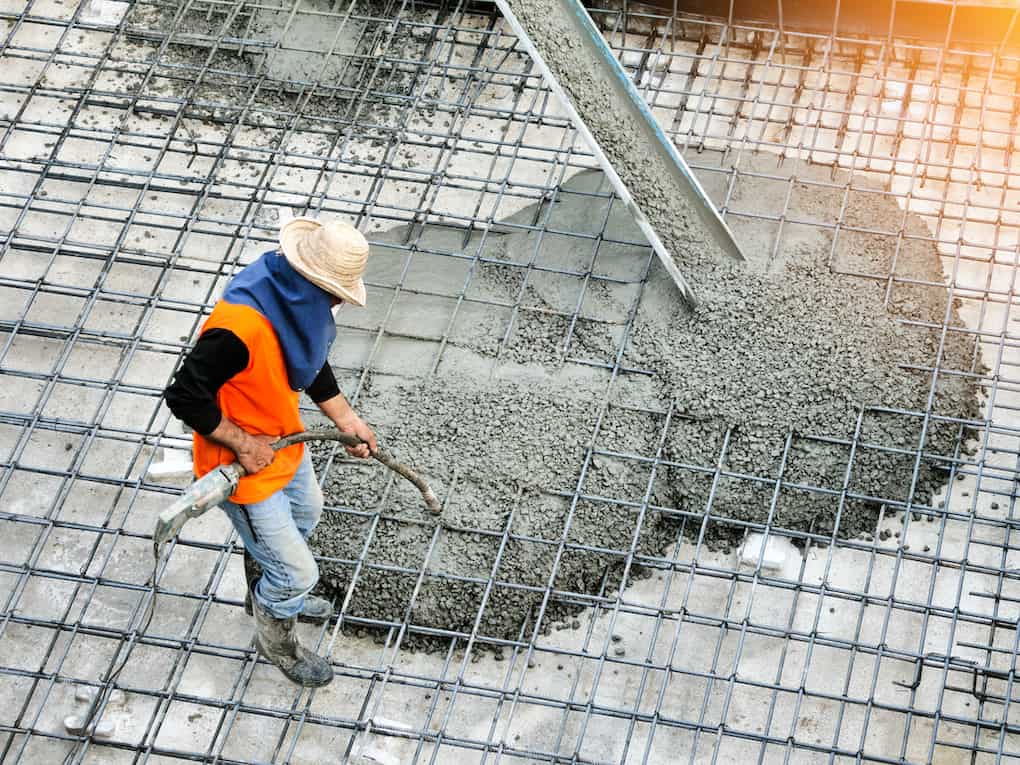
4) Prestressed Concrete
The larger a concrete project is, the more possible it is that you’ll find prestressed concrete on site. Prestressed products are created when the workers on-site apply tension to steel rods after the concrete has been poured into a form around those rods.
This process makes the concrete stronger and more capable of handling greater weights and holding up against tensile forces.
Common uses of prestressed concrete include:
- Bridges
- Heavily loaded structures
- Roof systems with long spans
5) Precast Concrete
Precast concrete refers to concrete products that are cast in a factory to exact specifications. The concrete is then transported to the site and assembled. If you see a truck hauling large concrete pieces then it’s likely precast.
Common products and uses for precast include:
- Concrete blocks
- Precast walls
- Staircase units
- Poles
Precast offers a speedy assembly and high quality because the concrete has been manufactured in a factory.
6) Lightweight Concrete
Any concrete that has a density of less than 1920kg/m is considered lightweight. Achieving that lighter weight is possible by using lightweight aggregates and changing the density of the concrete. Common natural aggregate materials include scoria or pumice and clays or other more processed materials.
Lightweight concrete is often used for building blocks or bridge decks.
7) High-Density Concrete
The opposite of light is heavy and that’s exactly what you get with high-density concrete. Heavy-weight aggregates are used to create high-density concrete that can make the structure resistant to radiation.
Bomb shelters, bunkers, and atomic or nuclear power plants are the most common uses for this concrete.
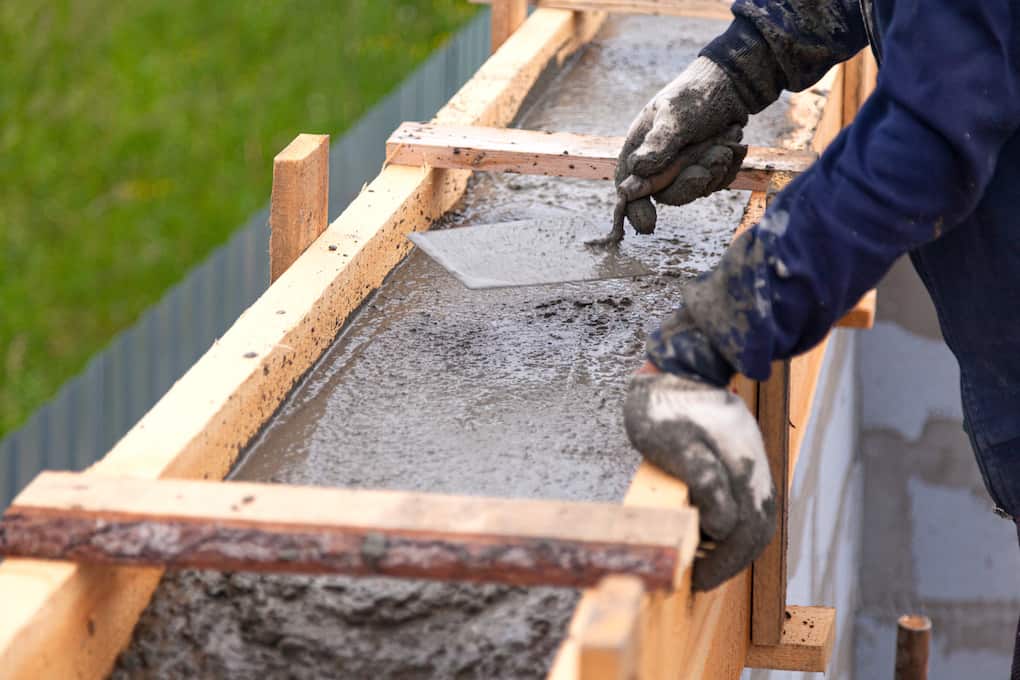
8) Air-Entrained Concrete
When air cells are intentionally held within concrete, air-entrained concrete is the product. The tiny air pockets relieve internal pressure on the concrete and provide tiny chambers where water can expand when it freezes. This keeps the concrete from cracking.
Foaming agents such as alcohols, resins, or fatty acids are added during the mixing process, and with the help of careful engineering, this concrete is produced.
9) Ready-Mix Concrete
Cement trucks running up and down the roads create this ready-mix product and are some of the most common concretes used today. Ready-mix concrete is mixed as it is transported to the site but can be highly specialized based on the order instructions received by the ready-mix company.
Ready-mix is always created at a central location where orders are received, prepared, and mixed as the driver heads out towards the job site. The precision that these trucks and operations provide is much greater than mixing the concrete on the job site.
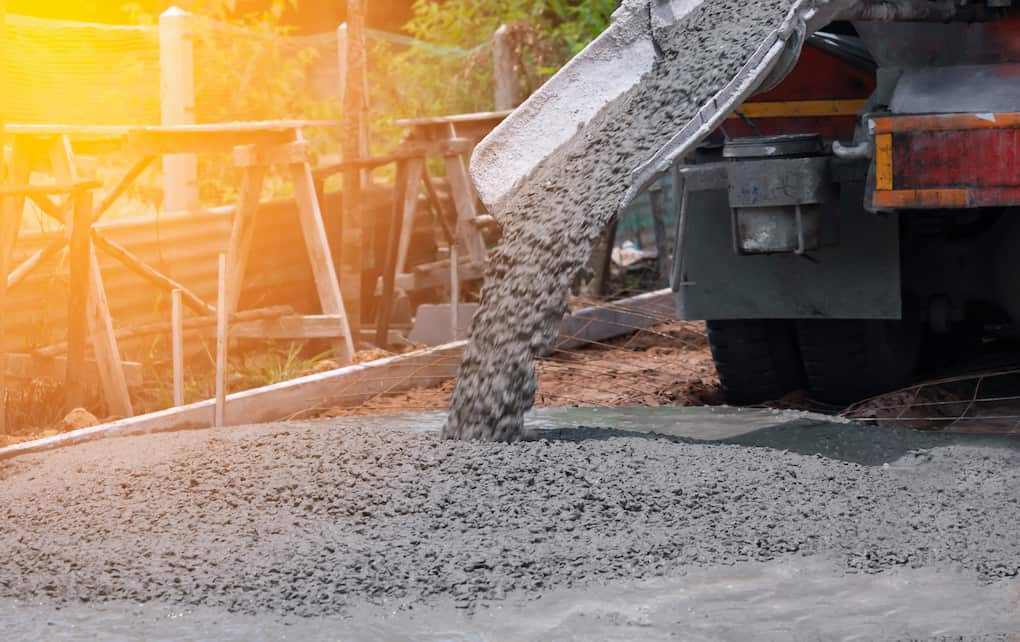
10) Volumetric Concrete
As an alternative to ready-mix, volumetric concrete helps to address the problem of long distances between concrete plants and job sites. Specialized trucks are used to move the concrete ingredients and water that isn’t mixed until you reach the job site.
Large job sites and sites that require more than one mix can benefit greatly from the use of volumetric concrete.
11) Decorative Concrete
Decorative concrete isn’t really a building material by any means but it can be used for all different types of finishing projects.
Some of the most common decorative concrete processes include:
- Coloring
- Molding
- Polishing
- Etching
- Applying decorative toppings
No matter the project you can make the concrete your own.
12) Rapid-Set Concrete
This type of concrete is actually a blend of cement and aggregate with less water than normal concrete. This result is fast-drying concrete that quickly sets up if you’re in a hurry.
This concrete is very useful in cold weather conditions and winters when other kinds of concrete won’t work as well.
13) Smart Concrete
Concrete of the future isn’t so far off in the future. Smart concrete can be monitored to provide information about reinforced concrete structures. Short carbon fibers are added to the concrete using conventional mixers. These fibers affect the electrical resistance when the concrete is stressed or strained.
This product isn’t widely available but has been used to sense structural flaws and possible failures. Cities with greater chances of earthquakes or other natural disasters can use this concrete type to get ahead of the problem.
14) Pervious Concrete
Water is a precious commodity and pervious concrete can help to conserve it. This special type of concrete allows water to seep right through the surface and down into the ground below it. When used properly, this concrete can be laid on roadways and eliminate the need for storm sewers.
Roadways that use pervious concrete experience less hydroplaning, tire spray, and snow build-up.
15) Pumped Concrete
Pumping concrete is a great way to get the concrete where it needs to go without the challenge of carrying all that concrete up the stairs or through the elevator.
Pumped concrete is extremely workable, making it easy to pump up several floors via a rigid pipe. Uses for pumped concrete include:
- Superflat floors on lower structures
- Roadways and bridges
- Swimming pools
Anytime that concrete needs to be moved up into a tall structure, pumped concrete is the way to go.
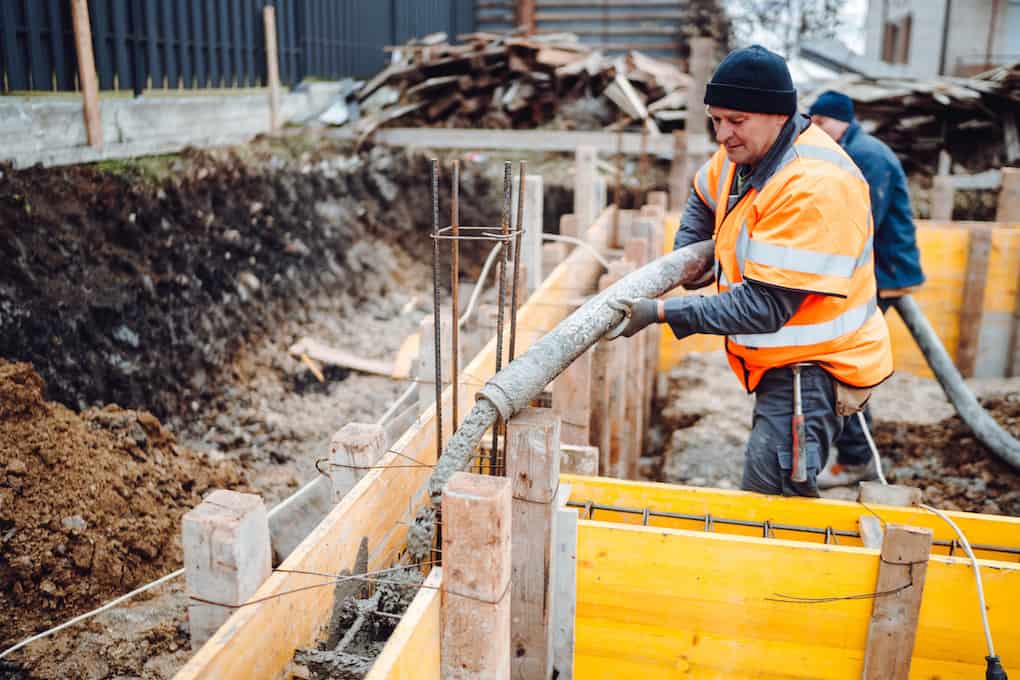
16) Limecrete
Limecrete is made up of lime and aggregate that can be used for a variety of purposes. This concrete has been around for centuries but is seeing a resurgence in popularity.
Limecrete is very lightweight, easy to clean, and doesn’t use any harsh chemicals. Common uses include:
- Floors
- Vaults
- Domes
17) Roll Compacted Concrete
Roll compacted concrete is a great way to achieve strength and durability without all the weight of high-density concrete. This type of concrete uses less water and cement than traditional mixes and emits fewer emissions during the production process.
Roll compacting creates a strong and dense concrete that works well on heavily trafficked highways.
18) Glass Concrete
This type of concrete is made from a variety of recycled materials including glass, porcelain, and tile. Glass aggregate can be obtained through recycling or by using crushed glass.
This concrete is very strong, durable, and beautiful. Uses for glass concrete include:
- Decorative flooring
- Shiny or colored concrete
The added shine of the glass aggregate used in glass concrete makes for a highly desired concrete.
19) Asphalt Concrete
Asphalt concrete is made up of asphalt, aggregate, and a small amount of Portland cement. It’s often known as blacktop or asphalt and can be used as pavement in virtually any area.
Asphalt concrete is durable, weather-resistant, and low in cost. It’s also easy to repair and maintain. It’s also skid-resistant and works very well when used as roadways.
20) Shotcrete Concrete
Concrete that’s shot through a nozzle onto a frame or formwork at high pressure is called shotcrete. This application provides a compacting process that takes place as the concrete is blown hard.
Most times this concrete is used to repair damaged wood, concrete structures, and steel structures.
Types of Concrete
Concrete types can be generally categorized by their intended use:
- Structural Concrete
- Non-Structural Concrete
- Precast Concrete
Structural concrete is the most common type of concrete and is used in buildings, bridges, highways, and other large projects. It is made to withstand high compressive loads and is reinforced with steel for added strength.
Non-structural concrete types are used in projects that don’t require the level of durability and strength of structural types. These types of concrete are generally used in smaller projects such as driveways, sidewalks, and patios.
Precast concrete is a type of structural concrete that is made in a factory setting and then transported to the job site. This type of concrete has many advantages over types of concrete that are poured on-site. Durability, uniformity, and ease of installation are just a few of the common advantages.
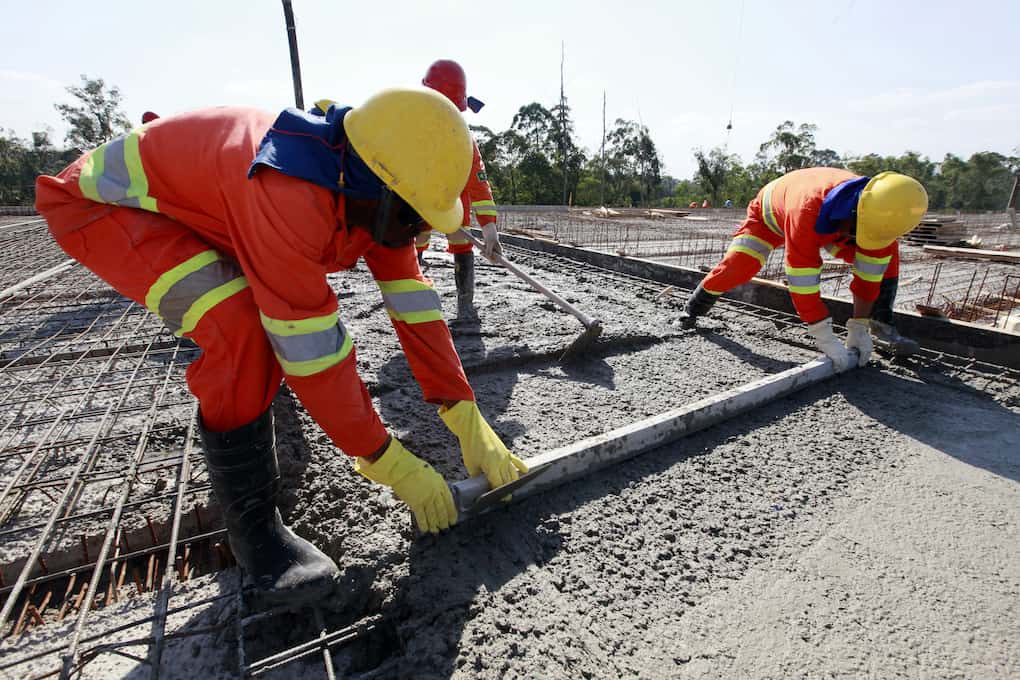
Hire a Professional Concrete Contractor for Your Next Project
Concrete can be a finicky building material and it’s not always worth trying to save money or take it on by yourself. Instead, hire Goodmanson Construction for all of your concrete needs.
Whether it be residential or commercial, our team of experts provides the best possible customer service. Other concrete contractors won’t offer you the same specialized, one-of-a-kind service that comes standard when you hire Goodmanson.
Contact us today for a free estimate!

